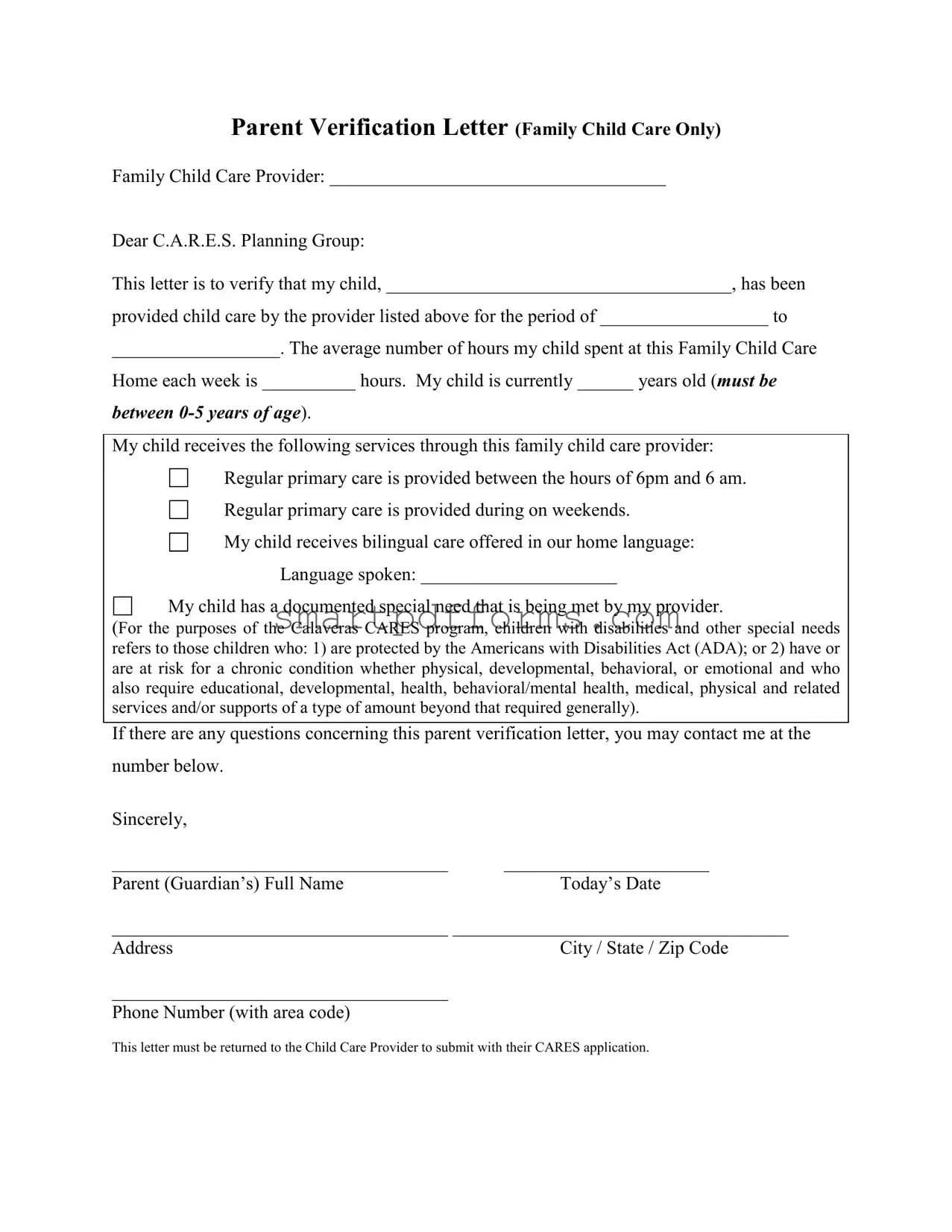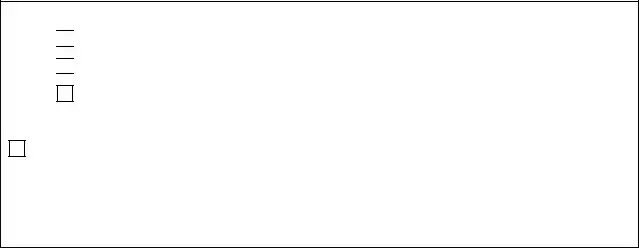-
What is the purpose of the Child Care Payment Letter form?
The Child Care Payment Letter form, specifically designed for family child care settings, serves as a verification document from the parent or guardian to the C.A.R.E.S. Planning Group. It confirms the child's enrollment and services provided by the family child care provider, including the period of care, weekly hours spent in care, the child's age, and details of the specific services received, such as regular primary care hours, bilingual care, and accommodations for special needs.
-
Which information is required in the Child Care Payment Letter form?
Information required includes the family child care provider's name, verification of child care services received by the child, the average number of hours the child spent at the care provider each week, the child’s age, detailed services provided (like care hours, bilingual care, and special needs accommodations), parent (or guardian’s) full name, address, phone number with area code, and today’s date.
-
Who should complete the Child Care Payment Letter form?
This form should be completed by the parent or guardian of the child who is receiving care from a family child care provider that is part of the C.A.R.E.S. Planning Group network. It articulates their acknowledgment and verification of the childcare services provided.
-
Why does my child's age matter for this form?
Your child's age is significant because the C.A.R.E.S. program has age-specific eligibility criteria, catering to children between 0 to 5 years of age. This information helps the Planning Group to confirm your child's eligibility for the program based on age criteria.
-
What services details need to be included in the form?
The form should detail specific services provided by the family child care provider, including the schedule of regular primary care, any bilingual care provided in your home language, and how the provider meets any documented special needs your child may have.
-
How is special care need defined in the context of this form?
In the context of this form, a child with special care needs might be one who is protected under the Americans with Disabilities Act (ADA) or has a risk for a chronic condition that requires more intensive services than typically necessitated. This encompasses a broad range of needs, including educational, developmental, behavioral/mental health, medical, and more.
-
Who should I contact if I have questions about this form?
If you have any questions about the Parent Verification Letter form, you should contact the parent or guardian who has signed the form at the phone number provided. They have offered to respond to inquiries concerning the provided verification.
-
What do I do with the form after completing it?
After completing the form, it must be returned to the child care provider who will submit it along with their application to the C.A.R.E.S. program. It is an essential document for the caregiver’s application process, indicating they have provided the services claimed.
-
Can the family child care provider complete this form on behalf of a parent?
No, the form is designed to be completed by the child's parent or guardian to ensure the information provided concerning services and care is accurate and verified by the individual directly responsible for the child.
-
Why is bilingual care mentioned specifically in this form?
Bilingual care is specifically mentioned as it highlights the provider's capability to offer services in the child's home language, ensuring a comfortable, easily understandable environment for the child. This information is crucial for programs that value cultural sensitivity and linguistic accessibility.



 !#% **
!#% **
 !%&
!%&